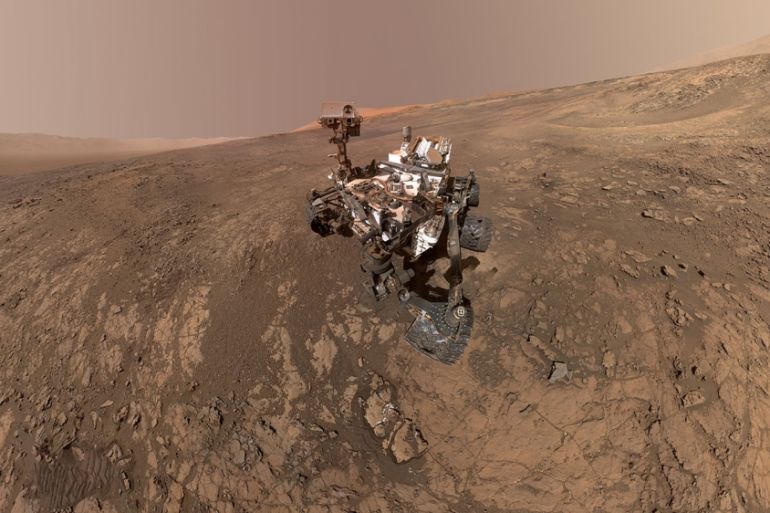NASA robot finds ‘building blocks for life’ on Mars
The data was collected through drilling into the lowest point of the red planet’s gale crater.

A NASA robot has found more building blocks for life on Mars, the most complex organic matter yet from 3.5 billion-year-old rocks on the surface of the red planet, the US space agency said on Thursday.
The unmanned Curiosity rover has also found increasing evidence for seasonal variations of methane on Mars, indicating the source of the gas is likely the planet itself, or possibly its subsurface water.
Keep reading
list of 4 itemsCould shipping containers be the answer to Ghana’s housing crisis?
Are Chinese electric vehicles taking over the world?
First pig kidney in a human: Is this the future of transplants?
The data, collected through drilling into the lowest point of the red planet’s Gale crater, is part of the US space agency’s newly widened search for organic molecules that could indicate past life on the surface of Mars.
This is a significant breakthrough because it means there are organic materials preserved in some of the harshest environments on Mars
Additional data from the robotic probe confirms the detection of “seasonal patterns” in methane levels, NASA geophysicist Ashwin Vasvada said in the live-streamed announcement.
NASA scientist Chris Webster confirmed that water has been found on the martian surface and has been present for “a very long time,” which points strongly toward a “habitable environment”.
The detection of a “repeatable identifiable methane cycle” could be a sign of active biological processes, Webster said.
While not direct evidence of life, the compounds drilled from Mars’ gale crater are the most diverse array ever taken from the surface of the planet since the robotic vehicle landed in 2012, experts say.
“This is a significant breakthrough because it means there are organic materials preserved in some of the harshest environments on Mars,” Jennifer Eigenbrode, an astrobiologist at NASA Goddard Spaceflight Center, told AFP news agency.
“And maybe we can find something better preserved than that, that has signatures of life in it,” she said.
NASA to launch a new rover
NASA’s first announcement of the presence of organic compounds on Mars came in 2014 when small levels of chlorinated methane compounds were detected.
“This is the first really trusted detection,” Sanjeev Gupta, a professor of Earth science at Imperial College London, said.
“What this new study is showing in some detail is the discovery of complex and diverse organic compounds in the sediments. That doesn’t mean life, but organic compounds are the building blocks of life.”
“This is the first time we have detected such a diverse array of these sorts of things,” he added.
NASA is planning to launch a new rover as early as July 2020 with a mission to comprehensively determine whether life ever arose on Mars, while characterising the climate and geology of the red planet and preparing for human exploration.
The European and Russian rover, ExoMars, is scheduled to land in 2021.
It will drill even deeper than any prior instrument, up to two yards (meters) deep, and set them aside for a possible future pickup and return to Earth.